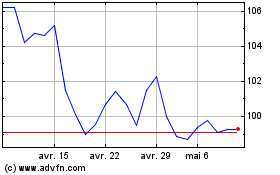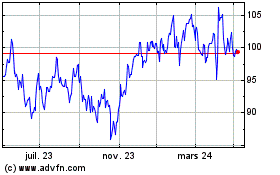By Peter Loftus
This article is being republished as part of our daily
reproduction of WSJ.com articles that also appeared in the U.S.
print edition of The Wall Street Journal (February 26, 2018).
Determining if you have the flu isn't always easy -- even with a
trip to the ER.
Doctors often skip the type of diagnostic tests that can deliver
results within minutes of a nasal swab, believing they're
unreliable. More accurate tests take longer to return results, and
doctors sometimes prefer to prescribe antiviral drugs or other
treatment based on symptoms rather than wait.
New regulations from the U.S. Food and Drug Administration are
designed to change that, raising standards and requiring
manufacturers to stop selling older rapid flu tests that don't meet
the new standards by Jan. 12. The deadline was set in early 2017,
well before the current flu season emerged as the most severe in
nearly a decade.
The main problem with the older tests: Too many false negatives.
The tests diagnose the flu by identifying viral proteins called
antigens, but they can't detect lower levels of viral material as
well as more advanced diagnostics. This means many patients who
have the flu might not get the right treatment, prolonging the
illness and, at times, leading to complications such as pneumonia
or bronchitis.
The 2009-10 flu pandemic, when a new virus led to more than 60
million cases of flu in the U.S., highlighted the ineffectiveness
of the rapid antigen tests because of the sheer number of suspected
cases missed, according to the FDA. The agency's new standard for
rapid antigen tests is that they can give false negatives in no
more than 20% of tests; previously there weren't established
performance criteria for the tests.
New diagnostics are starting to become available. Earlier this
month, the FDA cleared Quidel Corp.'s QuickVue Influenza A+B test,
the company said. Abbott Laboratories' Alere unit and Becton,
Dickinson & Co. also say they have antigen-based tests that
meet the raised standards.
Some companies have also introduced another rapid flu diagnostic
they say is more accurate: molecular-based tests, which detect
viral nucleic acid in patient specimens.
Roche Holding AG's diagnostics unit launched the cobas Liat test
in 2015, and Abbott's Alere i test was introduced in 2014.
Jesse Papenburg, a pediatric infectious-disease specialist at
the Research Institute of the McGill University Health Centre in
Montreal, and his colleagues analyzed studies of various rapid flu
tests and found the molecular-based tests missed fewer flu cases
than the older antigen-based tests. The analysis, published last
year in the Annals of Internal Medicine journal, was funded by a
Canadian health agency and Becton, Dickinson.
While there is a recognition within the medical community that
the new tests are more accurate, diagnostics makers still face
challenges.
Rapid molecular tests take between 15 and 30 minutes, while
rapid antigen tests generally take less than 15 minutes for
results. (Tests typically housed in laboratories can take several
hours or longer.)
The tests are also more expensive. Manufacturers sell the rapid
antigen tests to physicians and hospitals for about $10 to $15 per
test, while molecular-based tests cost about $25 to $50, according
to Jack Meehan, a diagnostics stock analyst at Barclays.
Misdiagnoses associated with the older antigen tests, meanwhile,
have left many doctors comfortable making treatment decisions
without a confirmed diagnosis, particularly if the flu is known to
be circulating in the community.
What's more, the U.S. Centers for Disease Control and Prevention
says doctors don't need a flu test confirming infection to decide
whether to prescribe antivirals, and that doctors can make
decisions on signs, symptoms and epidemiologic factors. Patients
who are hospitalized with suspected flu complications should be
tested with molecular-based tests because they are more accurate,
said Tim Uyeki, chief medical officer of the CDC's influenza
division. Starting patients on antivirals within two days of
getting sick could shorten the duration of illness by about one or
two days and reduce complications, according to the CDC.
"You don't need a rapid or positive test to treat influenza if
you suspect an individual has influenza," said Dr. Pedro Piedra,
professor of molecular virology, microbiology and pediatrics at
Baylor College of Medicine in Houston. "Fever and cough during
influenza season are two signs and symptoms that will increase the
likelihood you'll have flu."
Still, some doctors say rapid and more accurate tests can be
useful, noting that relying on symptoms alone can lead to incorrect
diagnoses in patients who have other infections.
In a clinical trial of a flu drug recently approved in Japan,
drugmaker Shionogi & Co. found that 55% of 590 American
participants, whose doctors had just diagnosed them with the flu,
actually tested negative for the virus when they were tested using
the more accurate, longer test.
"A diagnosis of flu is often made on the basis of clinical
symptoms alone," such as a cold or a running fever, said Anthony
Fauci, the director of the National Institute of Allergy and
Infectious Disease. "Therefore, people who have symptoms of flu but
who really do not have flu might be incorrectly diagnosed."
Treating patients who don't have the flu with antiviral drugs
like Tamiflu can expose them to gastrointestinal problems, skin
reactions and other side effects.
To help prevent those kinds of misdiagnoses, companies are also
introducing rapid diagnostics that test for multiple pathogens.
Danaher Corp.'s Cepheid unit received FDA clearance last year
for its Xpert Xpress Flu/RSV, which can detect flu as well as
respiratory syncytial virus, or RSV. RSV, which causes cold-like
symptoms, is mild for most patients but can be serious for infants
and older adults. Cepheid said the new test can deliver results in
30 minutes or less -- twice as fast as an older model.
BioMerieux's BioFire Diagnostics unit sells a molecular-based
test to detect flu and several other viral and bacterial pathogens.
It introduced a rapid version of the test, the FilmArray
Respiratory Panel EZ, in 2016, which delivers results in about one
hour, said Wade Stevenson, senior vice president of global
marketing. The company is working on versions with quicker
turnaround times.
--Preetika Rana contributed to this article.
Write to Peter Loftus at peter.loftus@wsj.com
(END) Dow Jones Newswires
February 26, 2018 02:47 ET (07:47 GMT)
Copyright (c) 2018 Dow Jones & Company, Inc.
Biomerieux (EU:BIM)
Graphique Historique de l'Action
De Avr 2024 à Mai 2024

Biomerieux (EU:BIM)
Graphique Historique de l'Action
De Mai 2023 à Mai 2024
